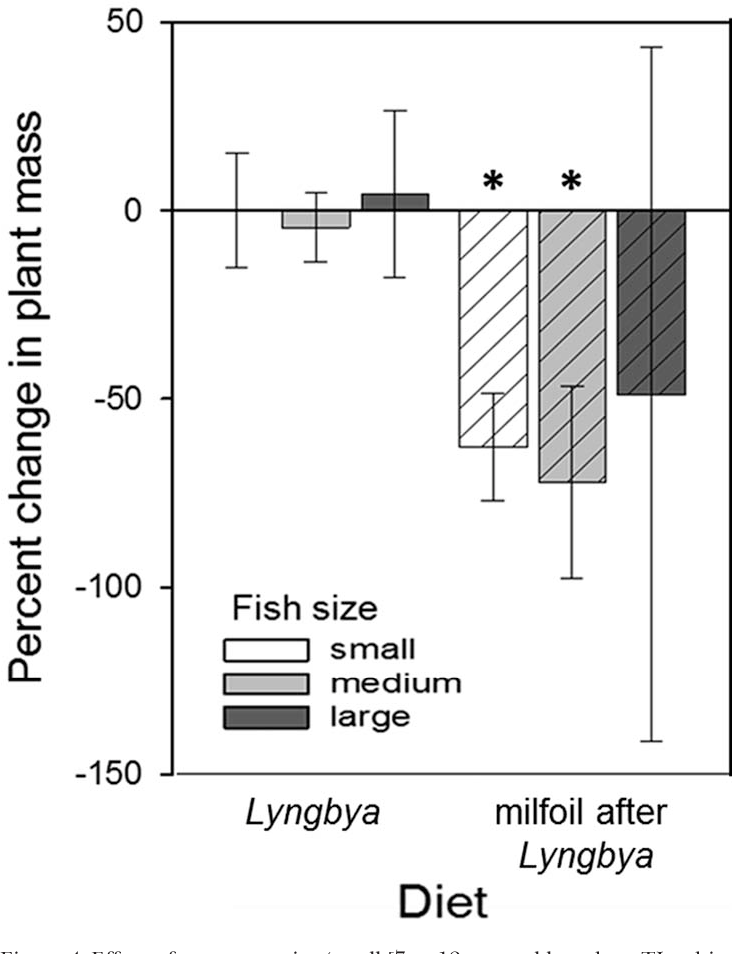
Citation
Kasinak, J.-M. E., C. J. Bishop, R. A. Wright, and A. E. Wilson. 2015. Grass carp do not consume the nuisance benthic cyanobacterium, Lyngbya wollei. Journal of Aquatic Plant Management 53:74-80.
Abstract
Grass carp, Ctenopharyngodon idella, (Cuvier and Valenciennes, 1844) are an effective biological control for many aquatic plants, especially submersed macrophytes and macrophytic algae. Despite limited data, grass carp are sometimes promoted as a tool for controlling filamentous algae, including some cyanobacteria, in small impoundments. One important cyanobacterium, Lyngbya wollei (Farlow ex Gomont) comb, nov., is a nuisance species in North America that forms benthic mats and surface scums and can produce multiple intracellular toxins and off-flavor compounds. Current management of Lyngbya calls for approaches similar to those for other nuisance algae, including chemical control using herbicides and biological control using grass carp when herbicides are not practical. Although agency biologists and private consultants recommend stocking grass carp to control filamentous algae, no conclusive empirical data show that grass carp consume Lyngbya. We conducted mesocosm experiments where different densities of grass carp of varying sizes were fed diets either containing a macrophyte, variable watermilfoil (Myriophyllum heterophyllum Michx.) and/or Lyngbya. In general, grass carp did not consume Lyngbya when offered by itself pr with milfoil, regardless of carp density or size. To test one mechanism mediating the lack of Lyngbya consumption by grass carp (i.e., chemical ecology), a feeding experiment where ground Lyngbya was fed to grass carp in agar pellets suggests that the secondary chemistry of Lyngbya prevents grass carp consumption. Although anecdotal observation suggests that high rates of grass carp stocking appear to Control Lyngbya, the results of this study suggest that the mechanism of control is not direct consumption (e.g., physical disruption of the benthic mats).